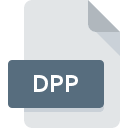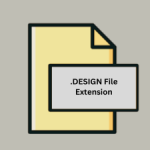.CV5 File Extension

Canvas 5 Drawing File
| Developer | ACD Systems |
| Popularity | |
| Category | Vector Image Files |
| Format | .CV5 |
| Cross Platform | Update Soon |
What is an CV5 file?
The .CV5 file extension is associated with Canvas, a powerful graphics drawing application developed by ACD Systems.
This file format is specifically used for storing vector and raster graphics, text, and other elements within a single document.
Canvas 5, the version associated with the .CV5 extension, was widely used by professionals for creating technical illustrations, presentations, and detailed graphic designs.
More Information.
Canvas was first released in 1987 and quickly gained popularity for its versatility in handling different types of graphic content.
The introduction of Canvas 5 marked a significant step forward in the software’s evolution, offering enhanced tools and functionalities.
The primary purpose of the .CV5 file was to store complex graphic designs, combining both vector and raster elements.
This capability made Canvas 5 an attractive option for professionals who needed to create detailed illustrations, technical drawings, and high-quality presentations.
Origin Of This File.
The .CV5 file extension originates from Canvas 5, a version of the Canvas software. Canvas was initially developed by Deneba Software, which later became part of ACD Systems.
The software was designed to provide a comprehensive solution for graphic designers, engineers, and illustrators who required both raster and vector graphic capabilities within a single application.
The .CV5 extension denotes files created with the fifth iteration of the software, reflecting improvements and new features introduced in this version.
File Structure Technical Specification.
The .CV5 file format is a proprietary format used by Canvas 5 to store a variety of graphic elements. The file structure includes:
- Header: Contains metadata about the file, such as the version of Canvas used to create it, file size, and creation date.
- Vector Graphics Data: Encodes the vector elements within the file, including lines, shapes, and paths. This data is stored in a way that allows for precise scaling and manipulation without loss of quality.
- Raster Graphics Data: Stores bitmap images included in the document. This section contains pixel data that forms the raster images, providing detailed visuals.
- Text Elements: Contains information about any text included in the document, such as font type, size, color, and positioning.
- Layer Information: Canvas 5 supports layers, and the .CV5 file format includes data about these layers, including their order, visibility, and locking status.
- Embedded Objects: Allows for the inclusion of other types of files and objects within the Canvas document, such as spreadsheets or charts.
The technical specifications of the .CV5 format ensure that it can handle a wide range of graphic content while maintaining the integrity and quality of the design elements.
How to Convert the File?
Converting .CV5 files to other formats can be necessary for sharing or editing in different applications. Here are some common conversion methods:
- Using Canvas: The simplest way to convert a .CV5 file is by using Canvas software. Open the file in Canvas and use the ‘Save As’ or ‘Export’ function to convert it to formats such as PDF, JPEG, PNG, or SVG.
- Online Conversion Tools: Several online platforms offer file conversion services that support .CV5 files. Websites like Zamzar or Convertio can convert .CV5 files to other formats without the need for Canvas software.
- Third-Party Software: Some graphic design applications may support importing .CV5 files and exporting them to other formats. However, this approach may not always preserve all elements of the original file accurately.
Advantages And Disadvantages.
Advantages
- Versatility: The .CV5 format supports both vector and raster graphics, making it suitable for a wide range of design tasks.
- Layer Support: Layers allow for organized and flexible editing, enabling designers to work on different elements of a project separately.
- Precision: Vector graphics in .CV5 files can be scaled without loss of quality, which is crucial for technical illustrations and detailed designs.
- Embedded Objects: The ability to embed various objects and files enhances the functionality and integration of different data types within a single document.
Disadvantages
- Proprietary Format: Being a proprietary format, .CV5 files require specific software (Canvas) to open and edit, which may limit accessibility.
- File Size: The inclusion of both vector and raster data can result in larger file sizes, potentially impacting storage and performance.
- Compatibility: Older versions of Canvas or other graphic design software may not support the .CV5 format, creating compatibility issues.
How to Open CV5?
Open In Windows
- Canvas Software: Install the Canvas application from ACD Systems. Open the software, then use the ‘File’ menu to open the .CV5 file.
- File Viewer Plus: A versatile file viewer that can open a variety of file formats, including .CV5.
Open In Linux
- Wine: Use Wine to run the Windows version of Canvas on a Linux system. Install Wine, then install Canvas within the Wine environment. This enables opening and editing .CV5 files.
- File Conversion: Convert the .CV5 file to a more universally supported format (e.g., PDF or SVG) using an online conversion tool, then open the converted file with a native Linux application like Inkscape or GIMP.
Open In MAC
- Canvas for Mac: If available, install the macOS version of Canvas from ACD Systems. Open the software and load the .CV5 file through the ‘File’ menu.
- CrossOver: Use CrossOver to run the Windows version of Canvas on macOS. This allows you to open and edit .CV5 files within a Windows environment on your Mac.













